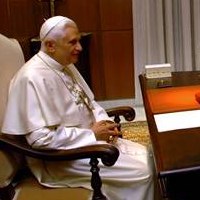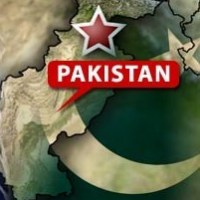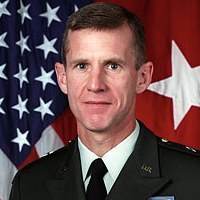![]()
Sun, March 20, 2011 | Guardian
WikiLeaks: U.S. Doubts over Afghan Re-Integration Plan
At President Karzai’s direction, the Afghan Office of the National Security Council has taken on the task of interagency coordination of reintegration planning, forming an Interagency Policy Working Group which produced a draft & National Reconciliation Policy and Reintegration of Armed Opposition Groups. The draft essentially a statement of reintegration principles which crosses no U.S. redlines recommends an appointed cabinet-level lead, a single office to oversee all reintegration/reconciliation efforts and a peace & jirga (grand council) to sanction an implementation plan for Karzai’s approval.
Source: WikiLeaks
Tuesday, 12 January 2010, 18:24
S E C R E T SECTION 01 OF 03 KABUL 000104
SIPDIS
EO 12958 DECL: 01/12/2020
TAGS PGOV, PREL, PINS, MARR, AF
SUBJECT: AFGHAN MOMENTUM ON REINTEGRATION PLANNING
REF: SECSTATE 815Classified By: AMBASSADOR KARL EIKENBERRY FOR REASONS 1.4 (b) & (d)
SUMMARY
——-
1. (S/Rel UK) At President Karzai,s direction, the Afghan Office of the National Security Council (ONSC) has taken on the task of interagency coordination of reintegration planning, forming an Interagency Policy Working Group (IPWG) which produced a draft &National Reconciliation Policy and Reintegration of Armed Opposition Groups8. The draft ) essentially a statement of reintegration principles which crosses no U.S. redlines ) recommends an appointed cabinet-level lead, a single office to oversee all reintegration/reconciliation efforts and a peace &jirga8 (grand council) to sanction an implementation plan for Karzai,s approval. Deputy National Security Advisor Shaida Abdali presented the draft paper to deputy ministers January 9. Previously, Presidential Advisor Masoom Stanekzai, the once and possibly future GIRoA lead on reintegration, on January 5 produced a concept paper derived from the draft ONSC principles paper, which fills in broad implementation details. (Note: as of January 10, it appears Stanekzai may gain a ministerial post unrelated to reintegration.)
2. (S/Rel UK) GIRoA will present Stanekzai,s reintegration concept paper to the international community at the January 13 Joint Coordination and Monitoring Board (JCMB) security sub-committee meeting and for endorsement at the full JCMB meeting on January 20. We expect that participants will acknowledge the paper at the January 28 London Foreign Ministerial on Afghanistan. While this process indicates Afghan movement on and commitment to developing a reintegration policy, none of these documents has yet been officially adopted and GIRoA has yet to designate a clear reintegration lead. In a January 6 meeting, Deputy Ambassador Ricciardone and ISAF Reintegration Advisor Graeme Lamb reiterated to Stanekzai that GIRoA should outline its integration strategy to the Afghan public prior to London, so that the international community can be seen as responding to an Afghan initiative (including with promises of financial support) rather than driving it. President Karzai told CODEL McCain and Ambassador Eikenberry on January 6 that he would announce a reintegration policy framework prior to London. END SUMMARY
Progress on Papers, But Not a Complete Policy
———————————————
3. (S/Rel UK) At President Karzai,s direction, the Office of the National Security Council (ONSC) has taken on the task of interagency coordination of reintegration planning, forming an Interagency Policy Working Group (IPWG) which produced a draft &National Reconciliation Policy and Reintegration of Armed Oppositions8 (sic). The draft ) essentially a statement of reintegration principles which crosses no U.S. redlines ) recommends an appointed cabinet-level lead, a single office to oversee all reintegration/reconciliation efforts and a peace jirga (grand council) to sanction an implementation plan for Karzai,s approval. The ONSC paper is a statement of principles with an accompanying assessment of prospects for reintegration,s success and a list of reasons why past efforts have failed. It emphasizes the need for Afghan leadership over programs resourced by ISAF. It leaves the door open to insurgents joining the security forces, though it specifies that GIRoA will not create autonomous militias.
4. (S/Rel UK) Presidential Advisor Masoom Stanekzai, the once and possibly future designated GIRoA lead on reintegration, on January 5 produced a concept paper derived from the draft ONSC principles paper, which fills in broad implementation details. (Note: as of January 10, it appears Stanekzai may gain a ministerial post unrelated to reintegration, throwing into question the identity of the next reintegration lead.) Stanekzai,s paper builds on the ONSC paper, laying out basic criteria for communities, inclusion in a reintegration program by which they would receive development support. (Participating communities would accept the return of reintegrees and supervise their progress.) It stresses the need for education and vocational training for ex-fighters and their economic reintegration within their communities. It cites, without elaboration, &links8 to &public protection force initiatives8, and the National Solidarity Program (a GIRoA initiative which provides grants to communities to fund development projects selected by locally elected development councils), which is one possible source of development support for this program. The paper also lays out general timelines and roles for GIRoA and the international community to follow. It distinguishes between different tiers of insurgents and argues, again
KABUL 00000104 002 OF 003
without elaborating, that different packages and approaches will be necessary for each. Both papers recommend that GIRoA establish a single office with a cabinet-equivalent lead with full authority for reintegration and reconciliation efforts under the direct supervision of the President. ISAF’s Force Reintegration Cell (F-RIC) recommended to the ONSC that this lead be staffed by a full-time organization supported by ISAF, the UN and the international community. GIRoA will also create an Afghan and international supervisory commission for financial oversight. (Note: we are emailing both ONSC and Stanekzai papers to SCA/A and S/SRAP.)
TIMELINES…
————
5. (S/Rel UK) ONSC officials told us on January 4 (and Stanekzai confirmed to us January 6) that they will present Stanekzai,s paper for discussion at the January 13 JCMB security sub-committee meeting and for endorsement at the full JCMB meeting on January 20. President Karzai also told Ambassador Eikenberry and CODEL McCain on January 6 that he would announce a reintegration policy framework prior to the London Conference. ONSC expects to develop more detailed implementation plans and see a Presidential decision on a reintegration lead after the London conference.
6. (S/Rel UK) GIRoA may convene a peace jirga to discuss and ratify the implementation plans, although probably not until May. GIRoA would seek donor pledges at the Kabul conference, which will likely be held in April or May. Both drafts state that the reintegration program will run for four to five years. The Stanekzai paper notes that tactical reintegration will precede higher-level &political engagement8 (reconciliation), and an evaluation phase where GIRoA will assess its progress.
…AND REDLINES
—————
7. (C/Rel UK) Both documents respect U.S. &red lines8 on insurgent reintegration (insurgents must lay down arms and renounce violence, reject al Qaeda, and abide by the Afghan Constitution) but there are some passages that we will suggest ONSC amend prior to release. Both drafts, but especially Stanekzai,s, seem so focused on reconciling insurgents that they ignore the rights of victims, and largely ignore the issue of perverse incentives. A vague reference to “amnesty” for former insurgents in the Stanekzai paper is confusing. (The ONSC paper states that criminals are not eligible for benefits and insurgents not immune from prosecution for violations of human rights.)
8. (/Rel UK) On January 6 Deputy Ambassador Ricciardone and ISAF Reintegration Advisor Graeme Lamb called on Stanekzai at his request for a stock-taking session. Key takeaways:
— All reiterated the importance of ensuring that the international community sticks to its collectively stated intention of supporting an Afghan-led reintegration process.
— Stanekzai detailed ongoing GIRoA discussions over how best to structure a trust fund for handling funds earmarked for reintegration programs. D/AMB noted that the USG would not wish to work its contributions via UNDP, one scenario under consideration. (Note: on January 9 UK emboffs shared with us a proposal for a &dual window8 method, through which donors could choose to have their contributions handled either by UNDP or a commercial bank. We expect this to be a topic for discussion among SRAPs at Abu Dhabi.)
— D/AMB took the opportunity to update Stanekzai on the internal USG processes related to the release of CERP and USAID funding for reintegration, including the requirement that the Secretary certify that GIRoA had a workable plan and that the Department had consulted with GIRoA on it. Stanekzai evinced confidence that the ongoing, extensive GIRoA interagency discussions would result in broad acceptance of the plan, with the looming London conference serving a &forcing function8 to get interested ministries to move beyond &personality issues8 to commit.
— D/AMB and LtGen (ret’d) Graeme Lamb recommended that the Karzai administration publicly outline its reintegration strategy prior to the London conference, which would then serve as a venue for the international community to offer concrete support. Stanekzai agreed and said that he had discussed this two days earlier with President Karzai, who planned to make such an announcement in Kabul.
— Stanekzai cautioned that reintegration of potentially tens of thousands of &foot soldiers8 would be a long-term proposition ) a five year-plan. Much work needed to carried
KABUL 00000104 003 OF 003
out, including development of a communications strategy, engagement with clerical leaders, and a plan for engagement with the Government of Pakistan. Stanekzai was eager to apply lessons learned from reintegration experience in other countries, such as Colombia, Thailand, and the Philippines.
9. (S/Rel UK) COMMENT: ONSC is delivering the long-awaited &Afghan lead8 on reintegration, though on timelines that some international supporters will find frustrating. We believe that the time GIRoA puts into building interagency coordination and consensus before moving out on reintegration is time well spent, particularly given the ongoing cabinet rebuilding effort. We will work with GIRoA and ISAF to encourage some fine-tuning of the papers (e.g. deleting gratuitous swipes at Pakistani ISI support for insurgents and purported ISAF insensitivity to civilian casualties). Whether or not Stanekzai ) a talented individual and open interlocutor ) remains the lead official on reintegration, we are pleased to see reintegration planning becoming institutionalized across ministry/agency lines. Coupled with ONSC,s engagement on banning ammonium nitrate (septel), its emergent lead on reintegration signals a welcome evolution of Afghanistan,s interagency process.
10. (S/Rel UK) The idea of a peace jirga to ratify GIRoA reintegration planning, if well handled, can be a good source of political support. Credible reintegration efforts require buy-in from non-Pashtuns who might otherwise be suspicious of a Pashtun-only &separate peace.8 Considering the scale of development money being earmarked for reintegration support, we are cognizant of the danger of creating perverse incentives, short-changing individuals and communities that have not fed the insurgency, and the potential for a lack of coordination with other governance and development initiatives targeting the same areas. Moreover, as a post-jirga plan could look considerably different than the GIRoA plan that is submitted to it, we should appropriately caveat our release of funds should a post-jirga plan cross U.S. redlines. END COMMENT
EIKENBERRY



 RSS
RSS











WikiLeaks: U.S. Doubts over Afghan Re-Integration Plan | #Afghanistan #Cablegate http://j.mp/fOreDW
WikiLeaks: U.S. Doubts over Afghan Re-Integration Plan | #Afghanistan #Cablegate http://j.mp/fOreDW
RT @CrethiPlethi: WikiLeaks: U.S. Doubts over Afghan Re-Integration Plan | #Afghanistan #Cablegate http://j.mp/fOreDW